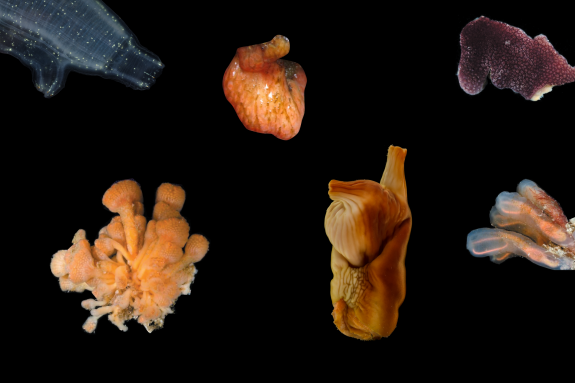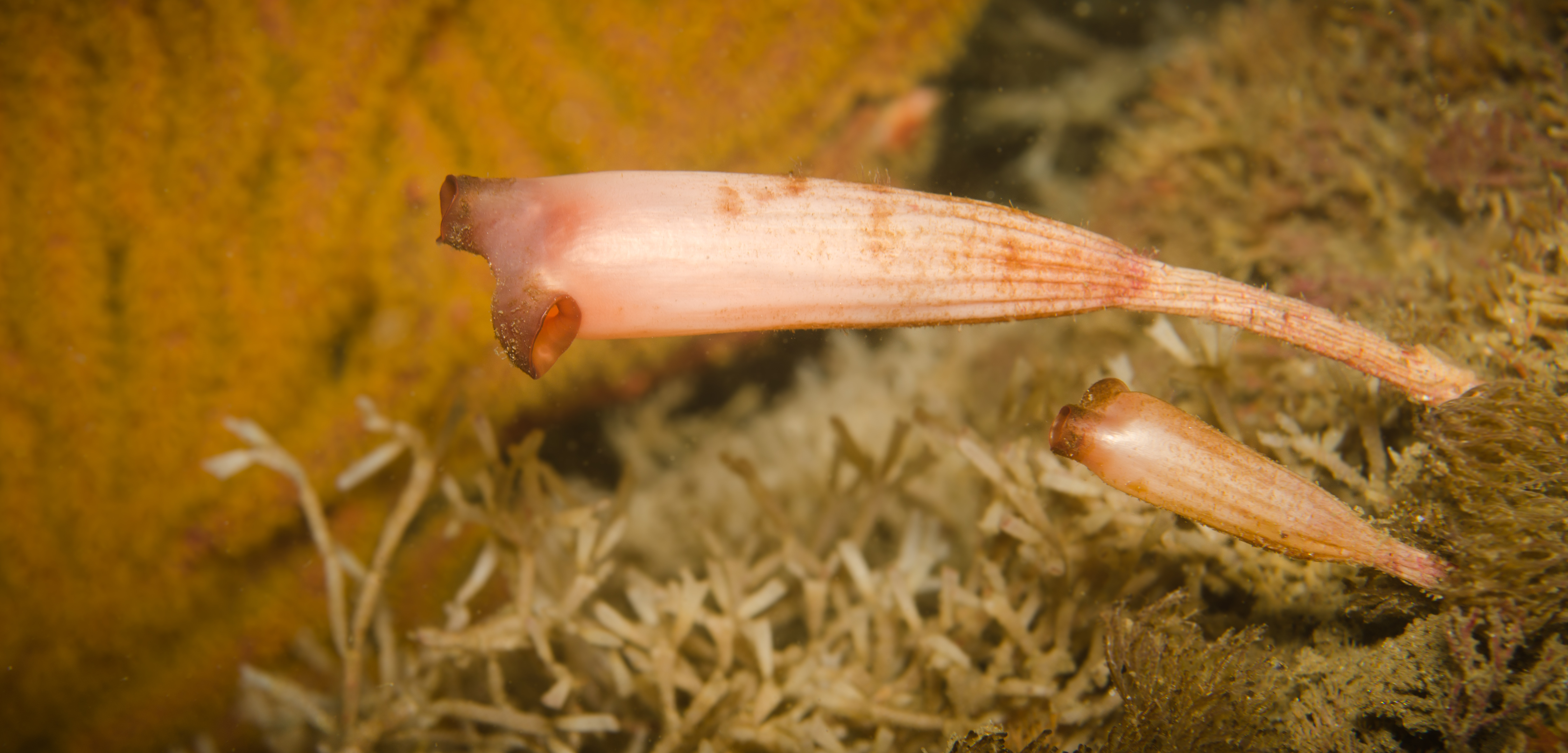A Good Place to Be a Sea Squirt
A new paper highlights Calvert Island as a hotspot for ascidian diversity.

Some look like snot on a dock. There are crusty colonies and globular blobs. Others resemble shriveled yams or shiny cherry tomatoes. These strange animals are all ascidians, and thanks to taxonomist Gretchen Lambert, we now know that Calvert Island is quite a special place for these critters.
Lambert came to Calvert Island for the 2017 Hakai-MarineGEO bioblitz and immediately began the task of cataloguing every species brought into the lab by scientists. This was a labor of love. Lambert, now in her late 70s, has spent more hours thinking about ascidians than almost anyone else on the planet. Her first scientific paper on them came out more than 50 years ago.
Ascidians are not as alien as you might think. Also called sea squirts, ascidians are a kind of tunicate, which are part of the phylum Chordata. If that sounds familiar, it’s because humans and everything else with a backbone are also in that phylum. As larvae, most ascidians go through a swimming “tadpole” phase, complete with the beginnings of a backbone. Then they take a turn toward sedentary life and morph into a sac surrounded by a thick skin called a tunic. Some live alone, while other species form colonies.
In a recently published paper in the journal Zootaxa, Lambert documented a remarkable 36 ascidian species, two of which are undescribed and will be given official scientific names in the future. That represents about one-third of all known species found from Alaska to Southern California.
Lambert was also surprised that only two of the ascidian species were not likely native to British Columbia. Around the world, many ascidians are invasive and cause considerable damage, so their relative absence from Calvert Island is noteworthy.
Calvert Island represents a mixing zone of sorts where species from Alaska come down from the north and warm-water species come up from the south, a phenomenon that also holds true for algae and other taxonomic groups. This confluence is part of what makes the BC Central Coast such a special place for biodiversity—sea squirts and all.

